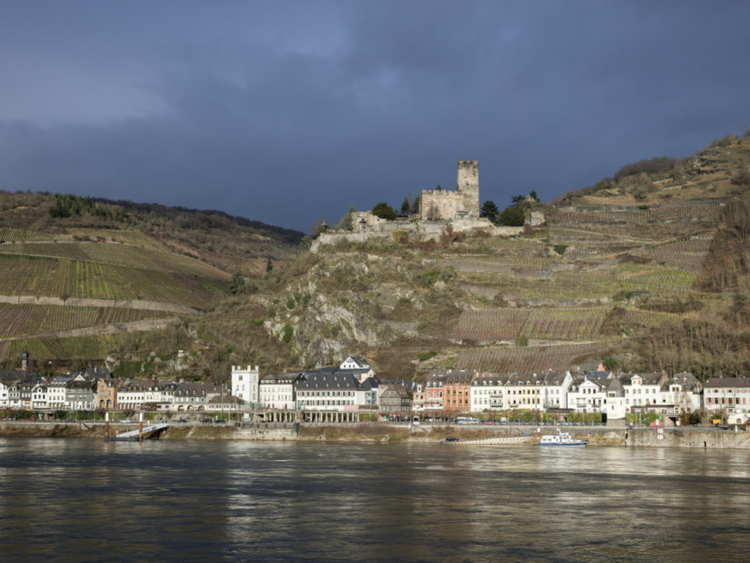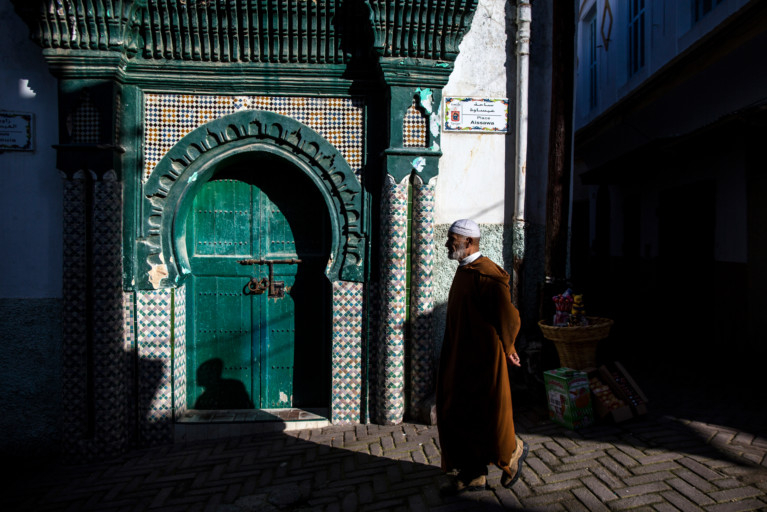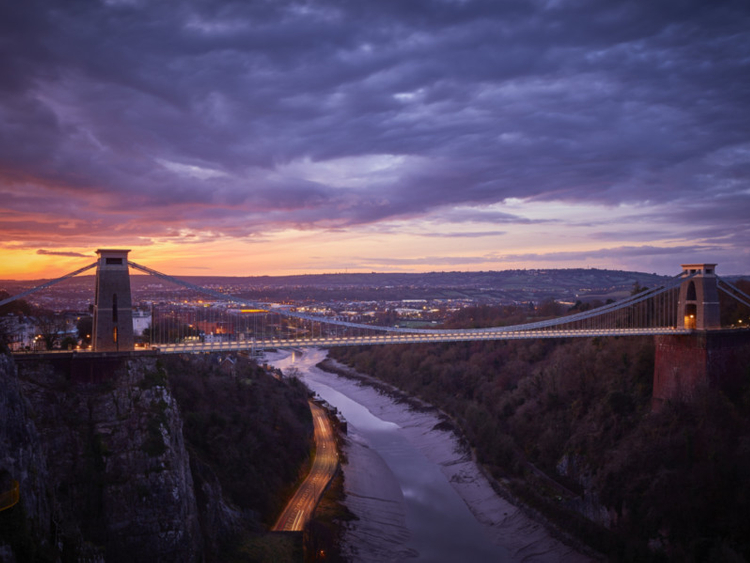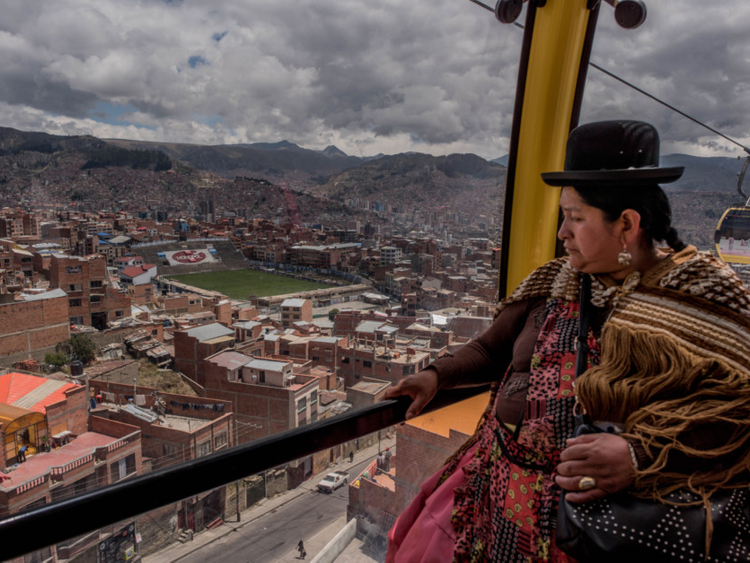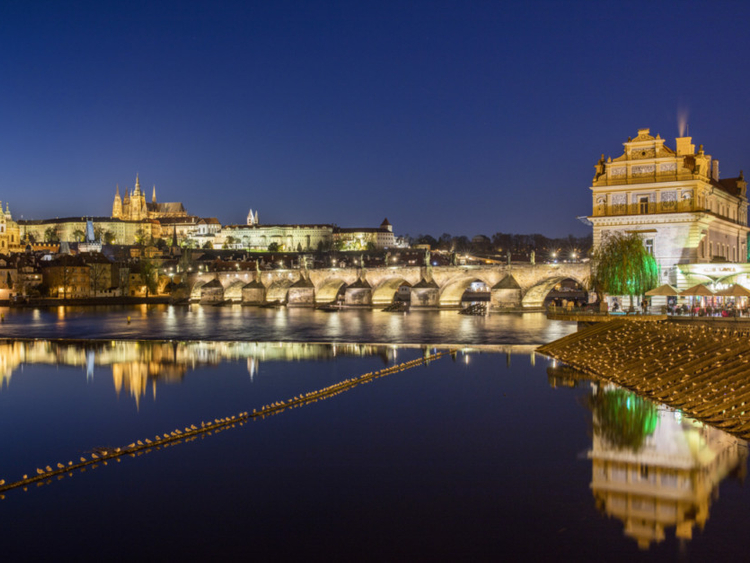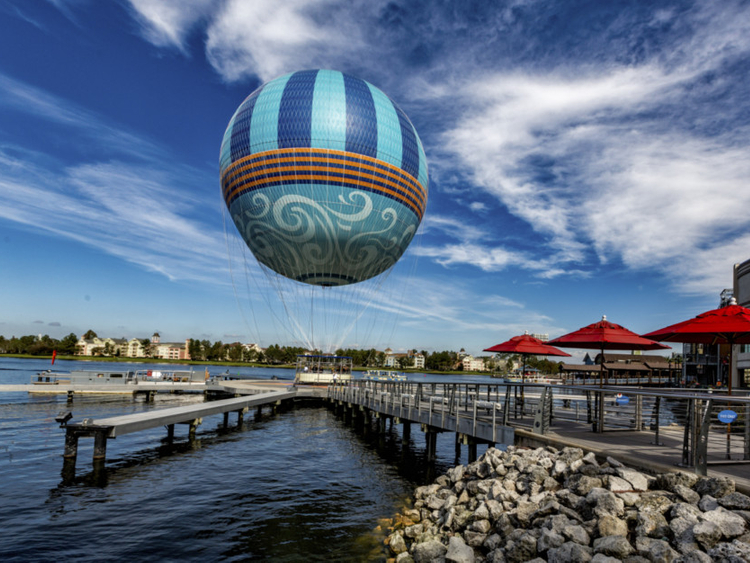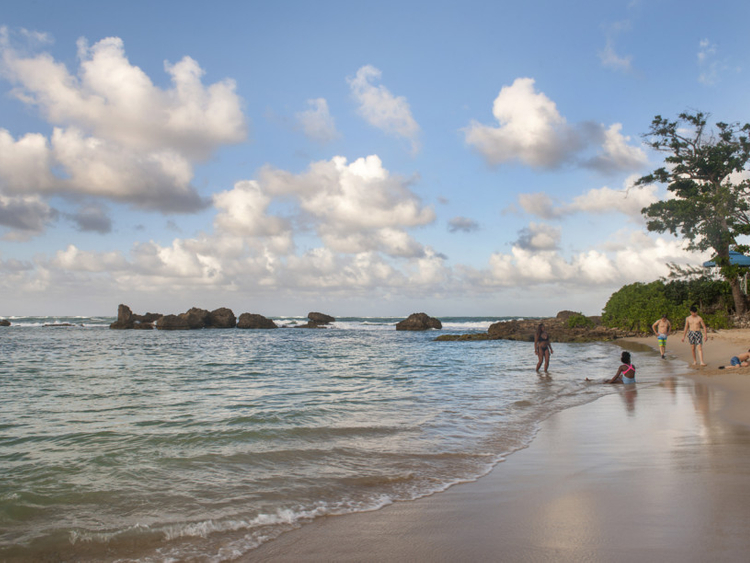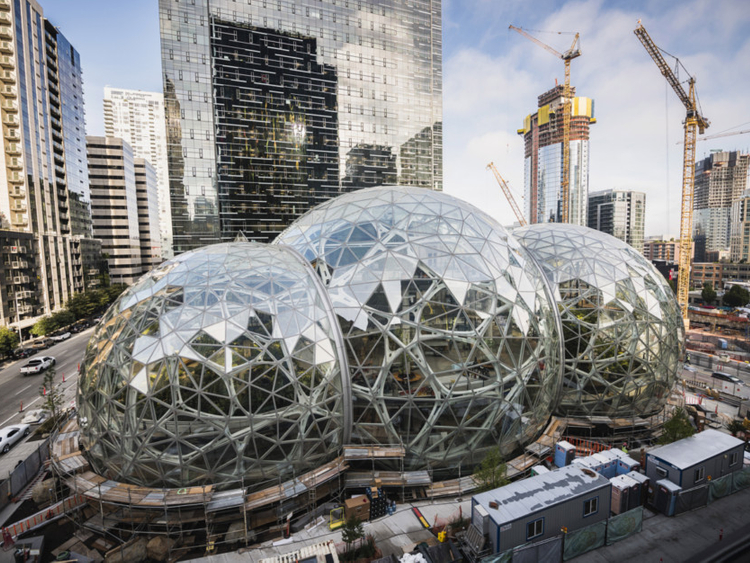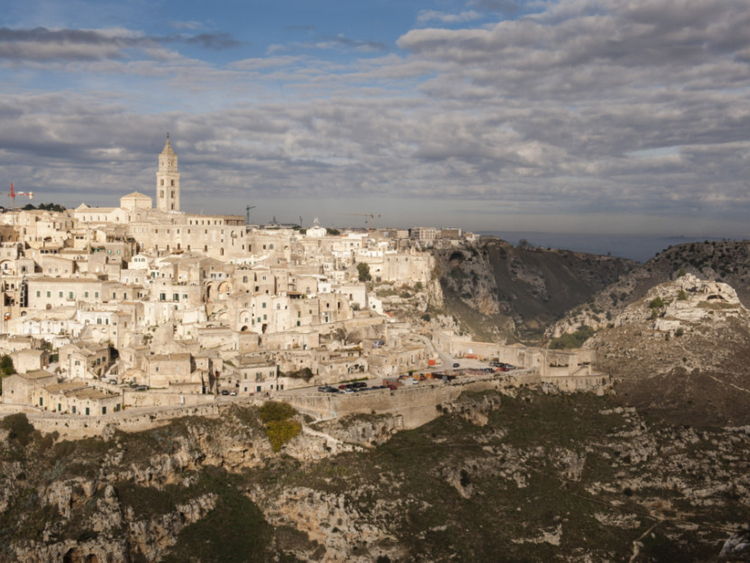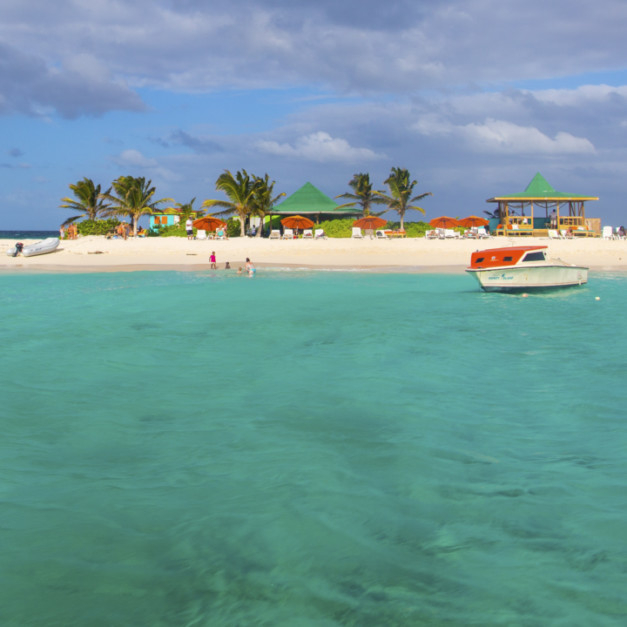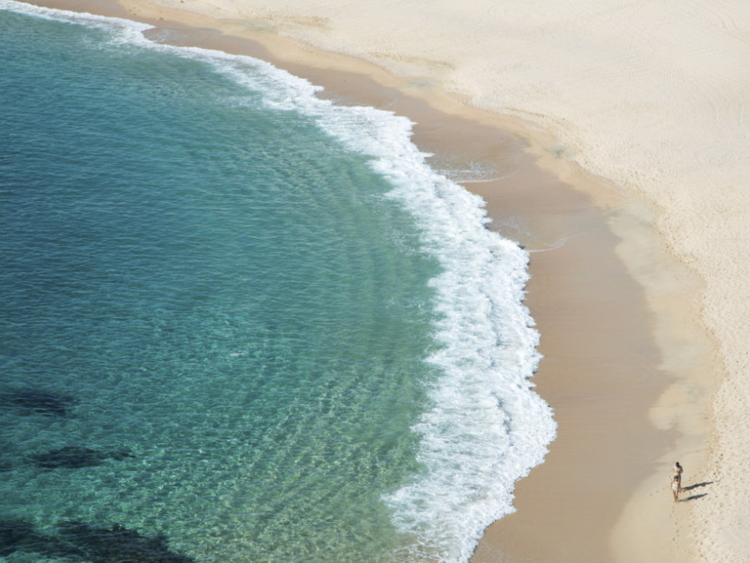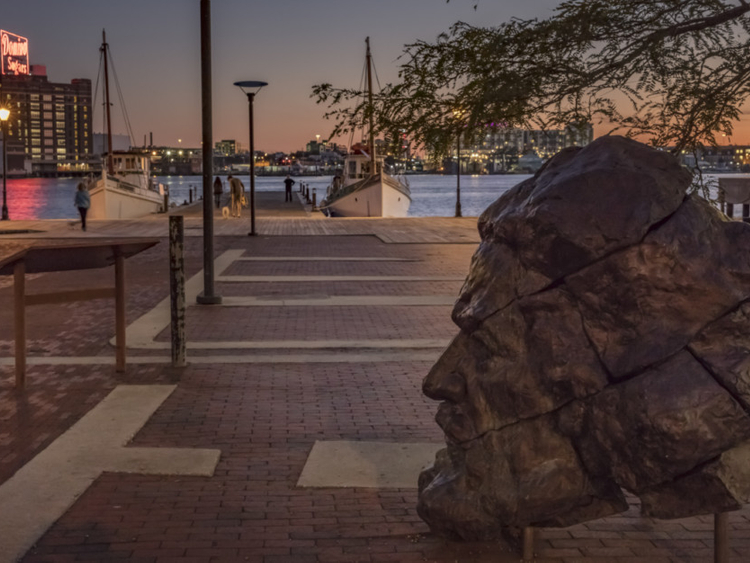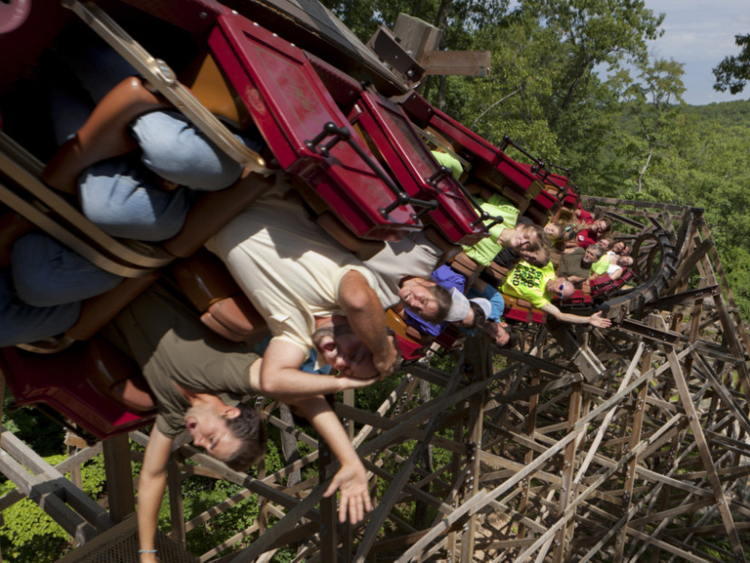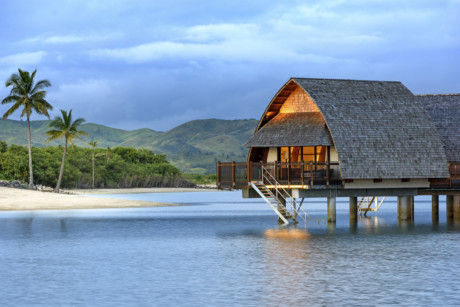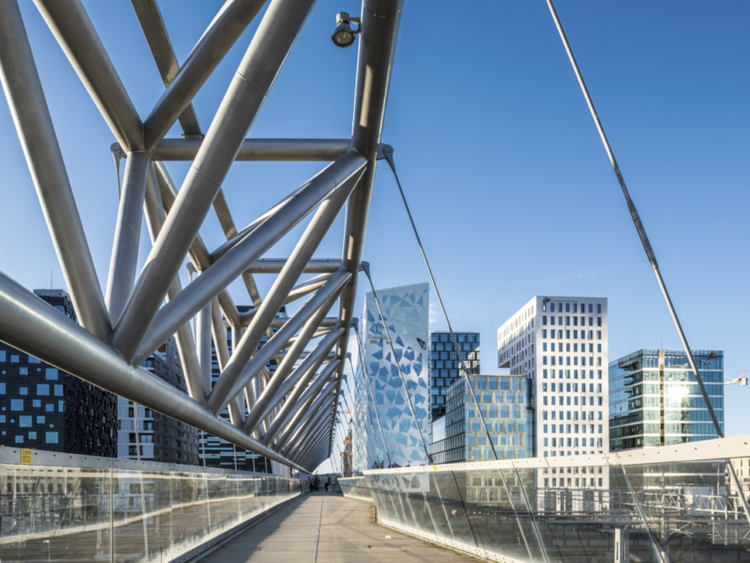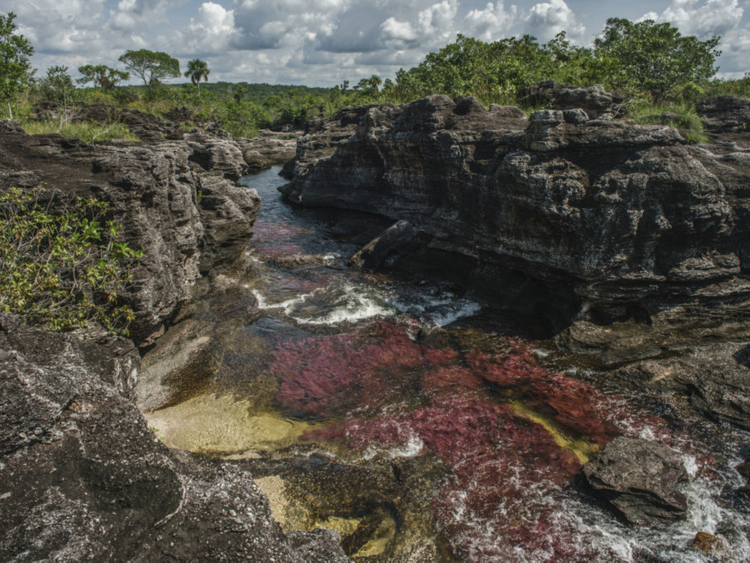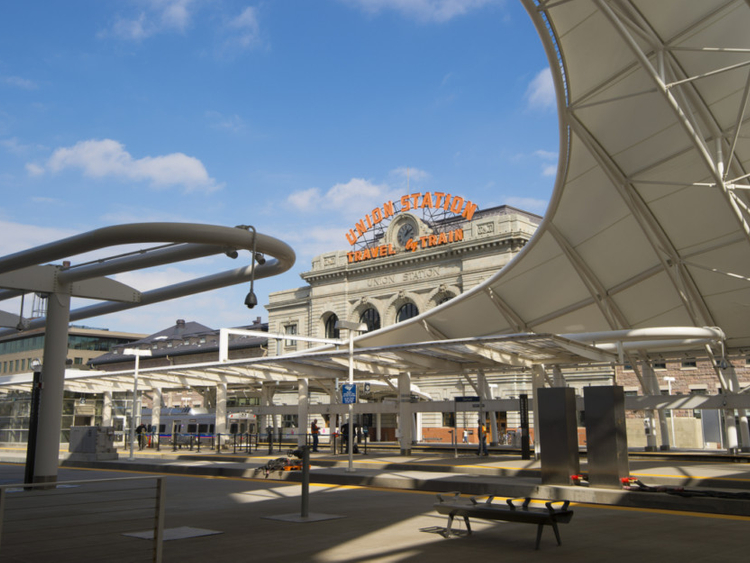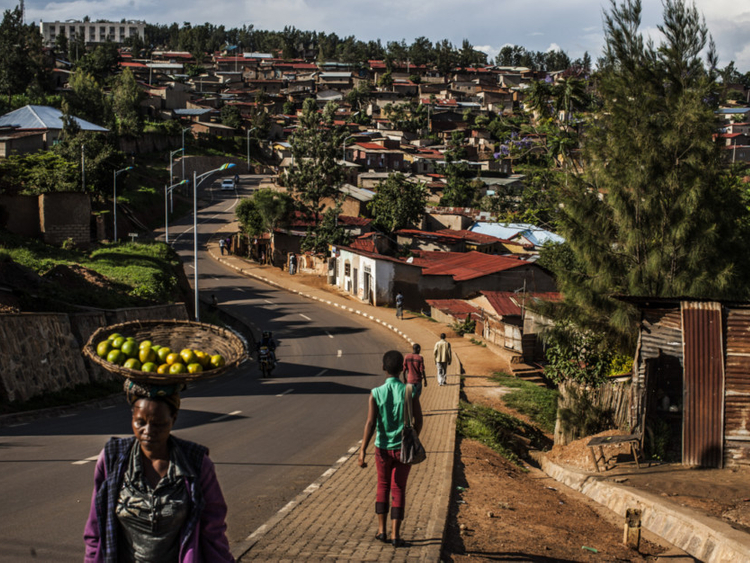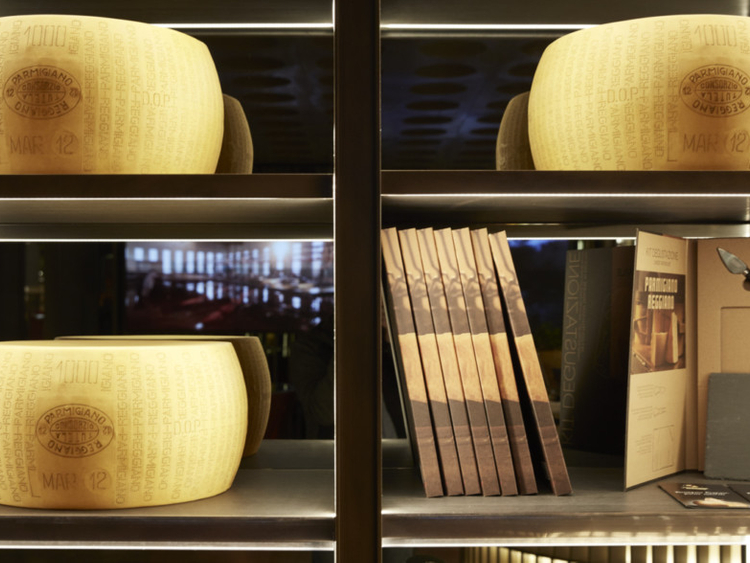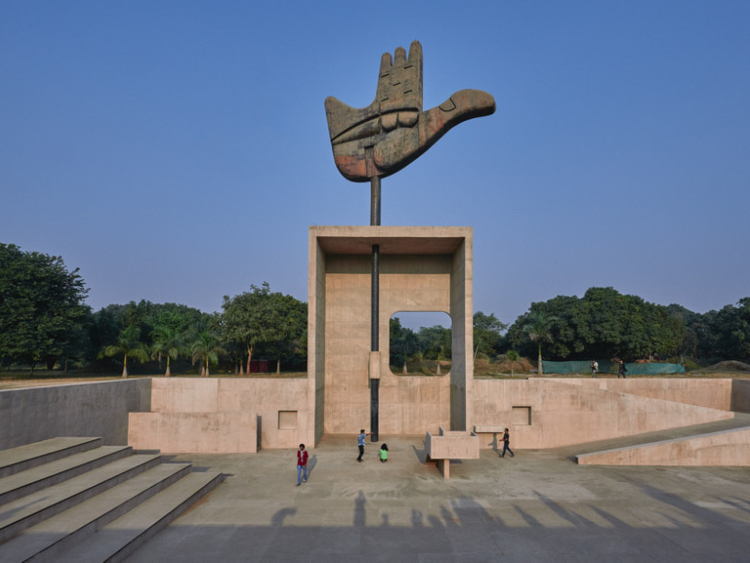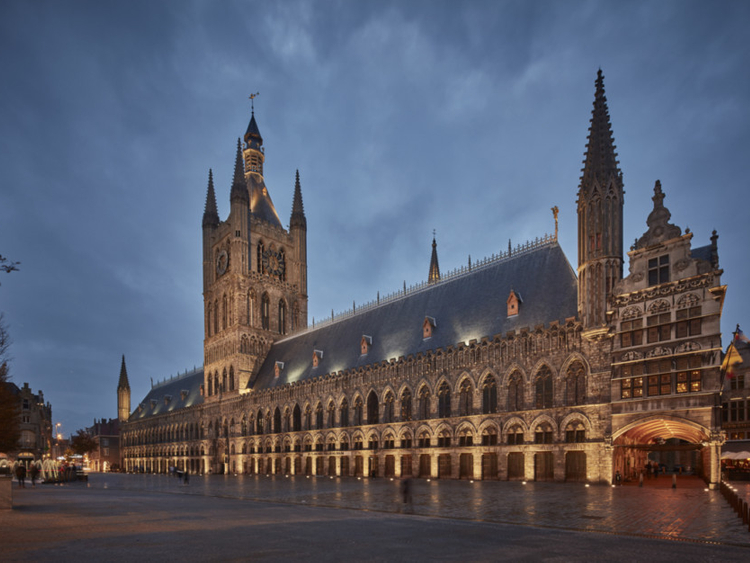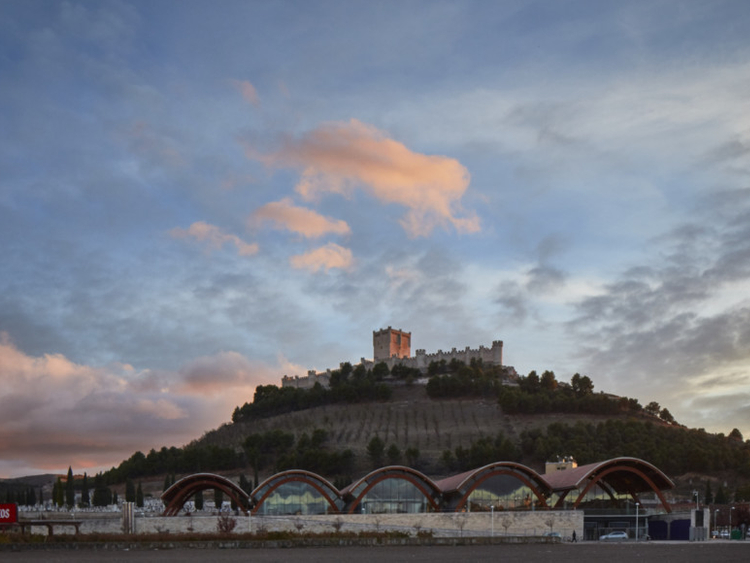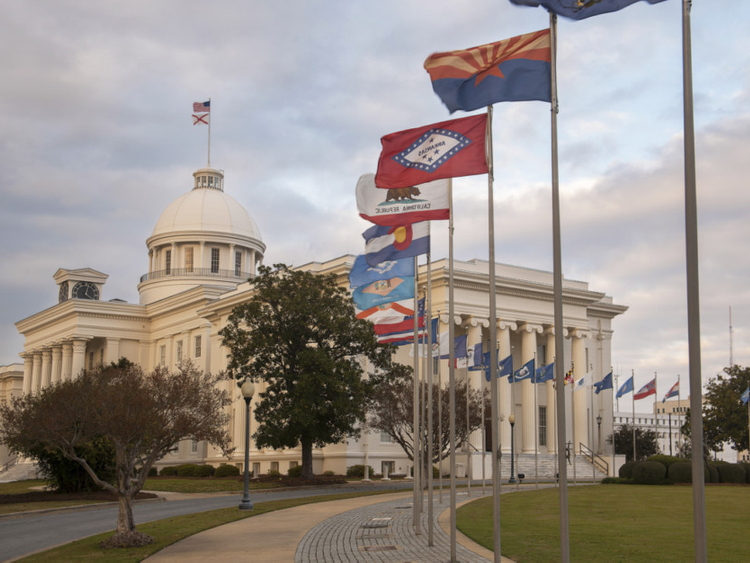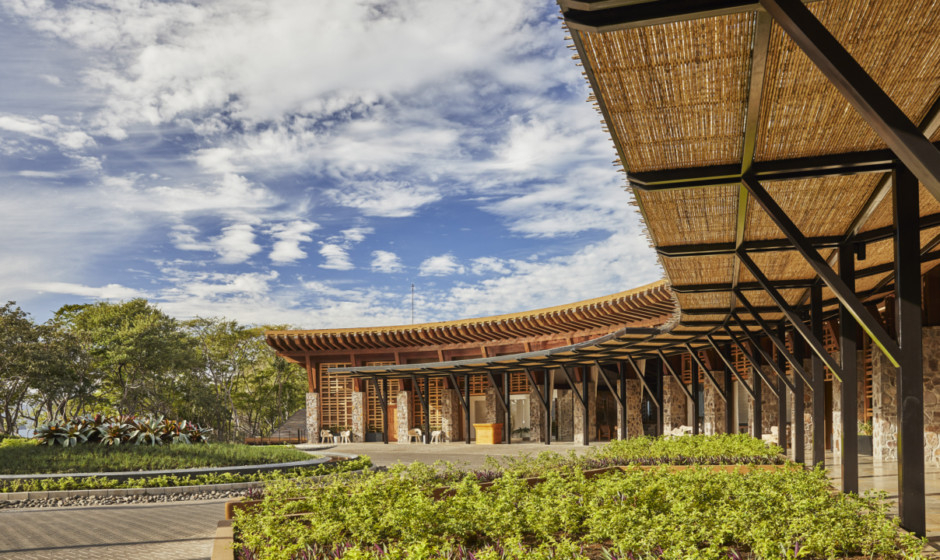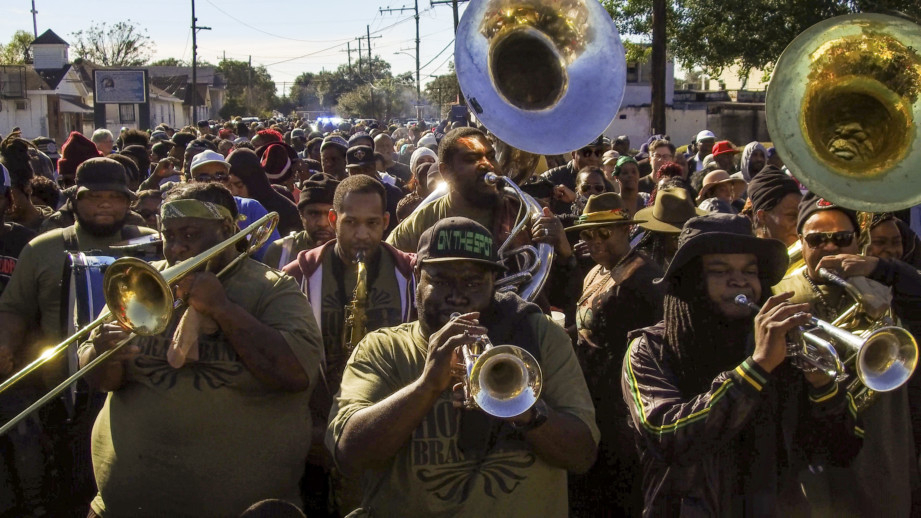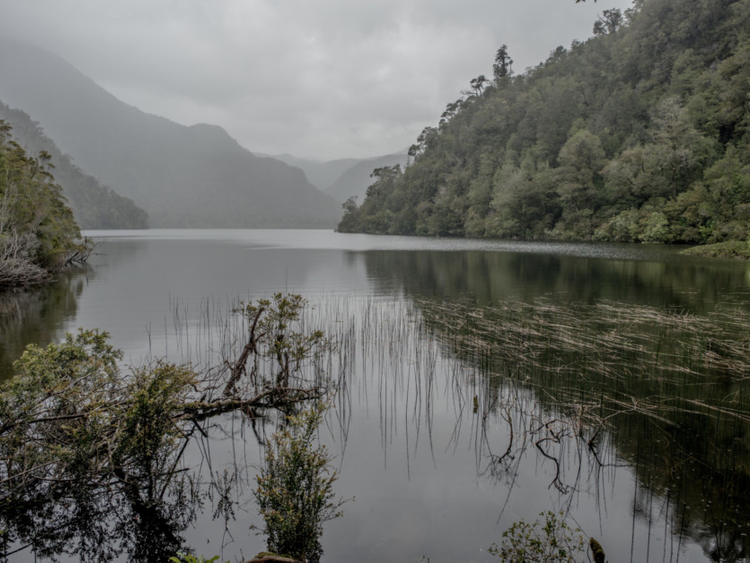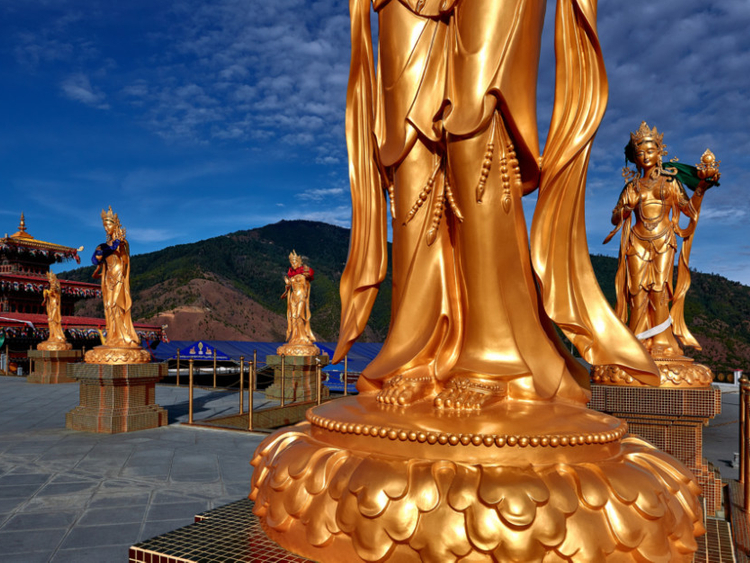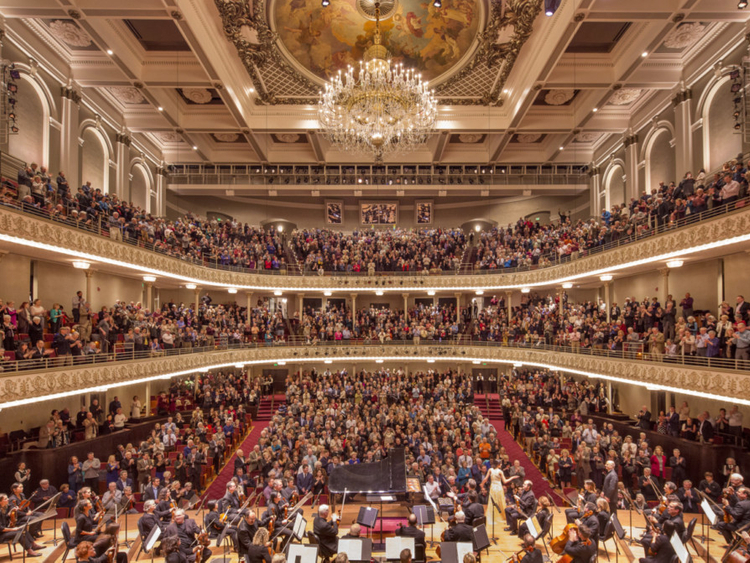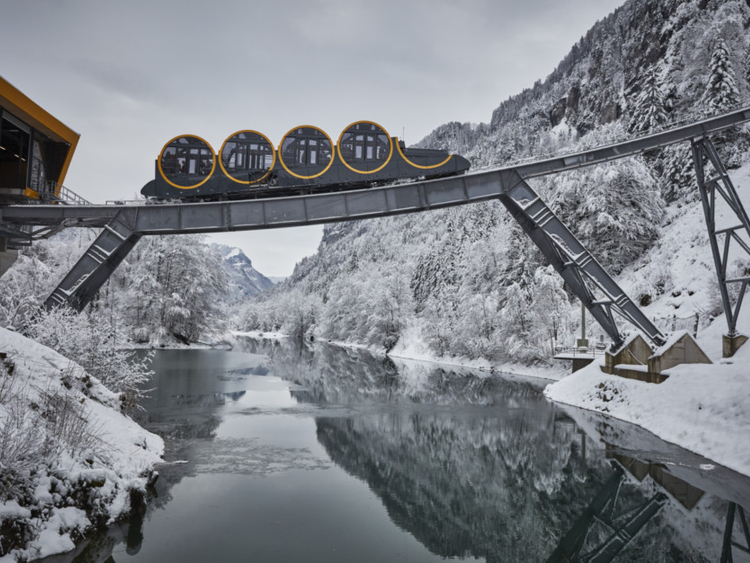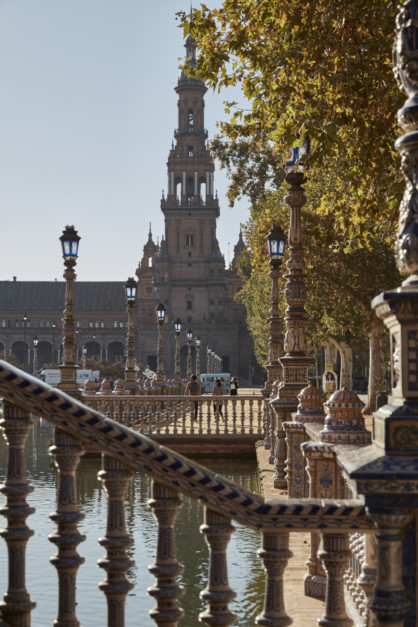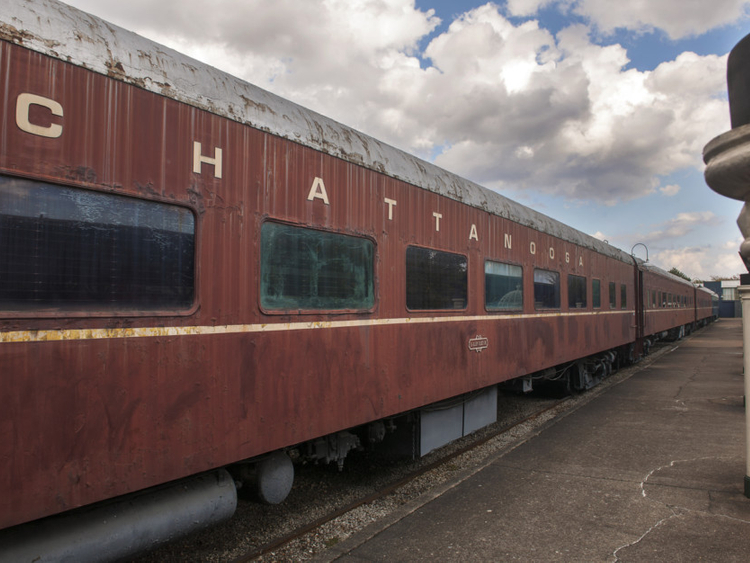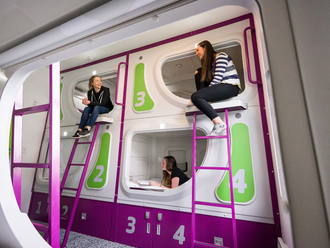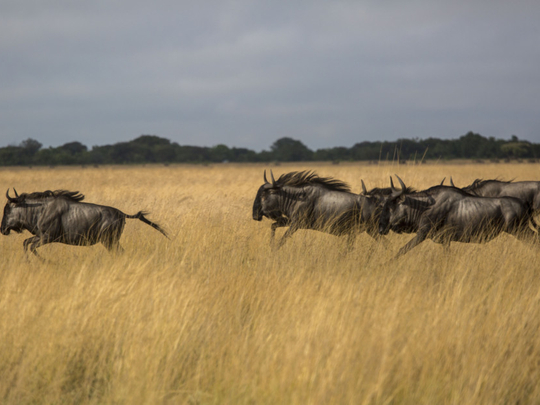
1. New Orleans — A one-of-a-kind US city turns 300.
There is no city in the world like New Orleans. Influences from Europe, the Caribbean, Latin America, Africa and indigenous peoples have made it the ultimate melting pot. And that diversity expresses itself in a multitude of ways that define New Orleans in the US imagination: music, food, language and on and on. Although it’s been a long recovery from Hurricane Katrina, New Orleans isn’t just back on its feet, it is as vibrant as ever — particularly impressive for a 300-year-old.
In honour of its tricentennial, there are events scheduled throughout the year. Other planned developments include a $6 million (Dh22 million) makeover for Bourbon Street, streetcar service expansions and additions to the Lafitte Greenway in Mid-City (including a new outdoor bar) and, in early 2019, the Sazerac House, a visitors centre and cocktail museum. A burst of hotel openings and the city’s always excellent and diverse restaurants (Compere Lapin, Marjie’s Grill, DTB and other recently opened spots are celebrating that diversity) and bars (Latitude 29, Portside Lounge) only sweeten the deal for travellers looking for tastes of all that America can offer.
2. Colombia — With the war finally over, the entire country is opening up.
After over a half-century of civil war coming to a close, Colombia is eager to become the adventurous-yet-cosmopolitan hot spot it deserves to be. While much work is needed to integrate former rebels back into society, the past decade has already seen foreign tourism rise by 250 per cent. In the pulsating capital of Bogota, dozens of luxe hotel chains have opened, while the food scene has gotten a boost from spots like Leonor Espinosa’s restaurant Leo. Elsewhere, you will find coffee fincas (rural or agricultural land) turned into luxury hotels, eco-resorts on isolated desert peninsulas and colonial buildings transformed into spa retreats. Once off-limit attractions like Pacific Coast rain forests and the rainbow-coloured river Cano Cristales are now in every guidebook.
3. Basilicata, Italy — Caves, beaches and more in Italy’s secret southern region.
This is the last year to visit Italy’s long-overlooked southern region before the world catches on. Between the heel that is Puglia and the toe that is Calabria, you will find Basilicata, the arch of Italy’s foot. Despite a storied and ancient past, the region has been overlooked in modern times. Easily Italy’s best-kept secret, Basilicata is revered for beautiful beaches, ancient towns and a dearth of organised crime. In 2019, the town of Matera, a Unesco site, will host the European Capital of Culture. It is also known for its ancient caves — once used for livestock, later as primitive homes, and today, as private residences and hipster, beautifully restored, Flintstone-esque hotels. But for now at least, the secret is still safe.
4. The Caribbean — Tourism speeds recovery in a storm-battered region.
Hurricanes Irma and Maria delivered a one-two punch to the Caribbean in 2017, battering many islands, including Dominica, Puerto Rico, Saint Martin and the US Virgin Islands. While more than 70 per cent of the tourism-dependent region was unaffected, hoteliers and tourism agencies across the islands banded together to help their neighbours and spread the word that business for one means survival for all.
Travellers can help by continuing to visit the islands that are open for business, and there are plenty of incentives to do so this year. New hotel openings range from the high-end Park Hyatt St Kitts and the Silversands Grenada, to the affordable Diamant Les Bains, a 1945 property that is being expanded on Martinique. For island-hoppers, the Moorings, a charter yacht company, began stationing boats in both Antigua and the Bahamas this season and resumed operations in the British Virgin Islands.
Some storm-damaged islands, where cruise lines have already resumed calling, have proven resilient. The new St Maarten Rockland Estate Eco-Park Rainforest Adventures’ new Rockland Estate Park introduced a zip line to Saint Maarten. On Anguilla, the nine-room Quintessence Hotel is scheduled to open on Long Bay Beach in January 2018. Although Puerto Rico’s population is still suffering, visitors can look ahead to the opening of San Juan’s 96-room Serafina Beach Hotel in March. Nearby, the boutique inn Dreamcatcher arranges for guests to volunteer in hands-on hurricane recovery projects.
5. Vierwaldstattersee, Switzerland — Sustainable Switzerland.
The medieval city of Lucerne is choked with tour buses, but new developments around the spacious lake it sits on (called Lake Lucerne by tourists but known as Vierwaldstattersee to locals) promise to thin crowds and offer accessible doses of authentic Swiss Alps. To help mobilise the masses, overnighters in winter will automatically receive the William Tell Pass, good for use on the region’s buses, boats, trains and cable cars, including the newly opened Stoosbahnen, Switzerland’s steepest funicular railway that accesses family-friendly Stoos, a scenic alpine resort and home to 33km of piste (ski run of compacted snow), a new lady bug-themed hiking trail, cheese markets, and yodelling and alphorn concerts. Just across the lake is the newly opened, $550-million Burgenstock, a modernist four-property resort offering achingly gorgeous alpine views and a 10,000-square-metre spa.
6. Route of Parks, Chile — A gloriously scenic network of Patagonian parks.
This year, Chile’s Route of Parks will be official thanks to an unprecedented conservation accord between Tompkins Conservation and the Chilean government, which together donated a total of 4 million hectares of Patagonian parkland to be preserved as five new and three extended national parks. The 2,414km designated adventure trail will connect a network of 17 national parks — from the Lake District to the Beagle Channel, winding through Patagonia’s primordial forests, snow-capped volcanoes and wild coastline.
7. Gangwon Province, South Korea — Temple stays, beachside resorts and the Olympics.
Gangwon Province, home to the Pyeongchang 2018 Winter Olympics, is easier to access from Seoul thanks to a new two-hour high-speed train between Incheon and Gangneung. The year-round destination is renowned for white-water rafting and hiking, and its sandy East Sea coastline has been revitalised by chic newcomers: Lotte Resort Sokcho and Richard Meier’s Seamarq Hotel. Meanwhile, mountainous Seoraksan National Park offers tranquil Buddhist sites and temple stays, like Woljeongsa, where travelers can taste South Korean temple cuisine.
8. Cincinnati — Three new theatres enliven a gentrifying district.
Cincinnati’s Over the Rhine neighbourhood is already home to microbreweries, farm-to-table restaurants and a streetcar linking it to downtown. In late 2017, a trio of new theatres heightened its cultural allure. The 1878 landmark Music Hall — home to the Cincinnati Symphony, Cincinnati Ballet and Cincinnati Opera — reopened after a $143-million renovation. Nearby, Ensemble Theater Cincinnati expanded and Cincinnati Shakespeare Company moved into new quarters where seats, none more than 20 feet from the stage, guarantee theatrical immersion.
9. Bhutan — Luxury lodges, helicopter tours and a new airport.
This is the year for top-of-the-line travel in Bhutan. After much anticipation, Six Senses will open five high-end lodges across Bhutan, with the first few scheduled for summer and the rest by the end of 2018. Elsewhere, three Bhutanese-owned properties, all new or renovated in 2017 — Nemjo Heritage in Paro, Zhiwa Ling Ascent in Thimphu and Ogyencholing Guest House in Bumthang — offer eclectic alternatives. Como Hotels will continue to market its new six-day heli-adventure package with a stopover in Laya, one of the most remote settlements on earth. And the country’s wild east will finally be accessible to travellers once flights begin operating out of Yongphula Domestic Airport sometime this year.
10. Glasgow, Scotland — A revived city.
More than 250 architectural projects will take shape on the River Clyde through 2025, including several new hotels, shopping and residential developments. Glasgow’s exciting, wallet-friendly restaurants, like 2017 newcomer Bilson 11, reinterpret Caledonian cuisine, while international flavours find increasingly authentic expression at spots like Ramen Dayo, which serves up admirable ajitama (soy sauce eggs) and tonkotsu ramen stock. Rather than choose one place to dine, embark on a graze with local tour operator Glasgow Food Co.
11. Top End, Australia — An indigenous tourism boom.
Australia’s remote Top End — the Northern Territory’s northernmost hunk — is experiencing an uptick of tourism to its aboriginal communities, the world’s oldest civilisations, according to 2017 DNA analysis. The 2017 Darwin Aboriginal Art Fair saw record crowds, while new camps, tours and indigenous partnerships are afoot in 2018. Venture North, known for exclusive access tours to Aboriginal Homelands of Kakadu National Park and Arnhem Land, expands with a second camp dedicated to visitors seeking cultural experiences and indigenous rock art, while Aboriginal-owned Pudakul Tours opens a six-room camp perched on a crocodile-filled billabong. The region’s small cities — Darwin, Palmerston, Katherine — are seeing new markets and indigenous centres, giving visitors hubs to appreciate the vast region’s diverse cultures.
12. Cambodian Coast — New gateways to Cambodian beaches.
Angkor Wat is still the biggest draw in Cambodia, but new flights, an improved airport terminal and new hotels are drawing more visitors to the coast. New routes and more direct flights to Sihanoukville International Airport, a gateway to the white-sand beaches, have increased leading to a renovation and expansion that will double the airport’s capacity by early 2018. And new hotels — notably Six Senses on Krabey Island and Alila Vilas on Koh Russey, both opening in 2018 — make the diving, snorkelling and beach life far more accessible.
13. East Cape, Los Cabos, Mexico — Resorts and cool farms off Cabo’s beaten path.
Miles from raucous Cabo San Lucas, the East Cape of Cabo, a formerly sleepy stretch of fishing villages, is buzzing. Chileno Bay, a sleek, contemporary resort with a restaurant helmed by a French Laundry alum, opened in 2017; a Four Seasons is due in late 2018. Kite surfers frequent the ocean, and immersive experiences surround the region’s farms, like Acre Baja, with a design-forward dining room and bar, activities (yoga, hiking) and treehouses for overnight stays.
14. Liuwa Plain National Park, Zambia — A remote safari destination now easier to reach.
Zebras, spotted hyenas and wildebeest are among the resurging wildlife in this 364,217 hectare national park in Western Zambia, where the nonprofit organisation African Parks has spurred conservation efforts since 2003. More than 300 bird species also live amid Liuwa’s vast, seasonally flooded plains, now more accessible thanks to direct flights from Lusaka to Kalabo. The park also added its first permanent camp in 2017, King Lewanika Lodge, offering views of Africa’s second-largest annual wildebeest migration each November.
15. Baltimore — A city honours an abolitionist and lights up with art.
Charm City’s packed cultural calendar is showcasing commemorative events for the 200th birthday of the Maryland-born abolitionist leader Frederick Douglass from museum exhibits to biography signings. Meanwhile, an expanded Light City festival in April will feature light-based art installations and performances in 14 neighbourhoods. And art and history buffs can soon crash at Hotel Revival, on the site of the city’s first public art museum.
16. Estonia — Marking a big birthday with a creative new national spirit.
Estonia is celebrating the 100th anniversary of its founding in 2018 with a cultural rebirth. The centrepiece is the newly opened Estonian National Museum, a stunning, 353-metre long glass structure set on a Soviet-era air base runway in the city of Tartu. Creativity is also flourishing in the independent design shops in Tallinn’s Telliskivi Creative City, a renovated 19th-century railway factory complex, and restaurants like Leib and Noa, where young chefs are experimenting with fresh takes on traditional Estonian cuisine and brewers are cultivating an exciting craft beer scene.
17. Gansu Province, China — Ancient Silk Road attractions, now within reach.
With the opening of the western segments of China’s national high-speed rail line in recent years, a host of ancient Silk Road attractions in Gansu province are suddenly much more accessible. The surreal rainbow-striped mountains in the Zhangye Danxia National Geological Park are now just a three-hour train ride from the capital of Lanzhou, half the time as before. Also more accessible are the westernmost part of the Great Wall built in the Ming Dynasty and spectacular 14th-century Jiayuguan fort, looking splendid again following a four-year, $290 million restoration.
18. Saskatoon, Canada — Picasso comes to the prairie.
Pablo Picasso, Georges Braque and other heavyweight 20th-century artists now have a home in the Canadian province of Saskatchewan, thanks to the new Remai Modern museum. A centrepiece of Saskatoon’s redeveloping riverfront, the museum sports world-class modernist architecture and an 8,000-work collection. Art fans coming by plane will arrive at the city’s recently expanded and refurbished (and award-winning) airport and can soon stay in style near the museum at the 15-storey Alt Hotel.
19. Seville, Spain — An artist’s 400th birthday paints a vivid portrait of Andalusia.
In the 17th century, Seville was a hive of creativity, hosting artists like Diego Velazquez, Francisco de Zurbaran, and Bartolome Esteban Murillo. The latter was baptised in the city on Janaury 1, 1618 and the Ano Murillo events include eight exhibitions, 30 concerts, tours and symposia celebrating the painter and his city. For 405 years, the stunning Palacio de las Duenas has belonged to the Dukes of Alba, Spain’s grandest grandees, and is newly open to the public. Travellers can experience modern palatial luxury at the new Hotel Mercer.
20. Peninsula Papagayo, Costa Rica — An eco-chic paradise gets a splashy makeover.
New owners are investing more than $100 million in properties and infrastructure at these 566 hectares on the northern Pacific coast, including the renovated 181-room Four Seasons Resort Costa Rica that debuted in December, a new beach club at the neighbouring Andaz and an expanded marina village. Also new for nature lovers: more than 12km of scenic trails; the Peninsula Papagayo Explorers Club, which customises action-packed adventures for travellers; and a macaw sanctuary opening in late 2018.
21. Branson, Missouri — Variety shows and steep spinning coasters all within reach.
This town in the Ozark Mountains, well-known for offering thrills of the highflying and toe-tapping variety, is upping its game. The theme park Silver Dollar City already boasts Outlaw Run, a wooden coaster with a corkscrew, and this spring will add Time Traveler, set to be the world’s tallest, steepest and fastest spinning coaster. Those who like their entertainment without sudden drops can enjoy one of the many theatrical productions, like The Haygoods, an energetic country music show with light-up fiddles and lasers.
22. Sao Tome and Principe — Underrated gem gets new luxe lodging.
This former Portuguese colony is called Africa’s Galapagos by naturalists. Five years ago much of this small island nation off the west coast of Africa was designated a Unesco biosphere reserve,with sea turtles and 16 endemic bird species among the protected wildlife. More recently the sustainable bent of tourism also became more luxurious with two properties launching on the smaller island of Principe: A plantation house, Roca Sundy, formerly a cocoa producer, opened in June 2017 with four poster beds and stand-alone tubs, while Sundy Principe, 15 beachfront tented villas by the Atlantic were set to open in December 2017, the first five star lodging there.
23. Germany’s Western States — Teutonic tolerance and technology.
Germany’s Bundestag, including all six Muslim members, voted in 2017 to legalise same-sex marriage. At the same time, politicians and voters alike pledged to close all 17 of the country’s nuclear plants by 2022.
While 2017’s right-swinging general election may bring potential setbacks to immigration and energy conservation, nowhere is the spirit of Teutonic tolerance more alive than in the country’s progressive western states, abloom with new visitor draws like the ancient ice age cave art in the Jura Plateau, inscribed on Unesco’s World Heritage list in 2017, the world’s first zero-emissions hydrogen passenger train, opening in Lower Saxony, two recently christened Viking long ships set for cruising the Rhine, and a $14 million renovation of the historic Le Meridien Frankfurt. The country’s biggest airport, in Frankfurt, sees a flurry of new flights including 2018 routes to Phoenix, San Diego and Philadelphia.
24. Fiji — Prosperity and progress in the South Pacific.
Recovering vigorously after 2015’s Cyclone Watson with the help of private sector investments, Fiji is reemerging with four new hotels. These include the sleek and surprisingly affordable Marriott Resort Momi Bay, with 22 overwater bure (bungalows) among its 114 rooms, and Kokomo, a 56-hectare private island on the Great Astrolabe Reef. Existing resorts like Nanuku have made meaningful nods to conservation in 2017 by banning single-use plastics like straws and shampoo bottles and introducing coral nurseries and mangrove restoration projects with reused plastic water bottles to grow seedlings. In spring 2018, Lindblad Expeditions/National Geographic is scheduled to launch a series of cruises to the South Pacific, including stops in Fiji’s lesser-visited islands like Taveuni and Beqa, while Fiji Airways inaugurated a new direct flight to Fiji’s Nadi International Airport from San Francisco in autumn 2017.
25. Chattanooga, Tennessee — A Southern city re-emerges.
When Chattanooga became the first city in the United States to turn on a citywide fibre network that offered remarkably fast internet service, multinational businesses moved in and prompted rapid growth and development. Renovations included new trails in the Tennessee Riverpark; new restaurants and music venues in the historic Chattanooga Choo Choo, a former train station; and, when it reopens this summer, an amphitheatre and more green space to downtown Miller Park. New hotels range from The Dwell Hotel, a midcentury glam boutique, to a 260-room Westin. And Songbirds Guitar Museum, with an impressive collection of rare and vintage guitars, adds to a flourishing music scene.
26. Oslo, Norway — A renewed Nordic capital primed for the spotlight.
Norway’s capital is ready for its moment in the Nordic sun. Capacity has doubled at the newly expanded Oslo Airport, which is as good-looking as it is green. Speedy airport trains now whisk visitors to the city center, where architectural landmarks are rapidly proliferating. And a new 5 1/2-mile waterfront promenade, Havnepromenaden, runs from a sea-fed outdoor pool, across a High Line-inspired park, to a year-old indoor skatepark with hyper-colourful facades by the local artist Pushwagner.
27. Honshu’s West Coast, Japan — Art fairs and new tours.
The west coast of Honshu, the largest of Japan’s four main islands, sees a handful of new developments, including the world’s largest art fair, the Echigo-Tsumari Art Triennale, taking place across 200 villages of the remote Niigata prefecture. A tour launched by Remote Lands takes visitors to the remote Noto Peninsula. Down the coast in the hot springs onsen town of Kinosaki, the 8th-century Onsenji Temple, unveils its 11-headed Kannon Buddha to the public once every 33 years and opens for viewing in April 2018. Access it by hitching a ride on Japan’s extravagant 30-passenger sleeper train, the Twilight Express Mizukaze, which launched last summer. For those on a budget, Marriott recently opened four hotels in Japan, including a property in Lake Biwa, just 32km from the coast.
28. Arles, France — Provence’s new cultural cradle.
This ancient Provencal city continues its long art world associations with Luma Arles, an experimental interdisciplinary art campus funded by the philanthropist Maja Hoffmann. The project will see five former industrial buildings transformed into galleries, exhibition halls and a new public park over the next two years. Visitors to La Formation, a new performing arts residence set to open by summer, should also book a free tour of the Parc des Ateliers in development, including its glistening showpiece slated for 2019: a 55-metre Frank Gehry-designed tower to house exhibitions, a library, dining spaces and offer soaring views of the Camargue.
29. Kuelap, Peru — New access to the fortress in the clouds.
As heavy tourist traffic has led to new restrictions on visits to Machu Picchu, tourists should consider heading north instead to the so-called Machu Picchu of the north: Kuelap, the site of a stunning pre-Incan settlement built by the Cloud Warrior people of the northern Andes. The walled city, home to hundreds of circular homes and ceremonial buildings, sits in a cloud forest 304 metres above sea level, with views of the surrounding jungle-blanketed mountains. The ruins became more accessible with the 2017 opening of a cable car system that cut travel time from the nearest town, Nuevo Tingo, to just 20 minutes from a 90-minute drive or a four-hour hike.
30. Downtown Denver — A new art epicentre.
Denver’s downtown, particularly the Golden Triangle Creative District, is fast becoming a vibrant arts centre. The Kirkland Museum of Fine & Decorative Art will reopen there in March. While the old space had room for 3,500 works, the new one will be able to display about 6,000 world-class decorative arts pieces. Kirkland is surrounded by other high-calibre museums including the Denver Art Museum as well as more than a dozen galleries showcasing works by notable contemporary artists. A big factor in the Denver arts movement is the city’s push for artists to make their gallery-worthy works viewable to the public through street art — one example is Rob Reynold’s Ocean View mural on display on an outdoor wall in the Golden Triangle, which was commissioned by the Art, a Hotel, nearby.
31. Kigali, Rwanda — Clean and sustainable — a model of the new Africa.
Rwanda’s capital, a modern, tech-centric model of African progress, is emerging as Africa’s friendliest tourist destination. Sustainability efforts include a nationwide plastic bag ban that has cleaned up city streets. Plush accommodations like the first-ever Marriott in sub-Saharan Africa and the coming Heaven Retreat are raising the luxury bar. And for women travellers concerned about safety, last year Rwanda celebrated record-low crime rates and a fifth-best ranking for gender equality in the world.
32. Belgrade, Serbia — Europe’s gritty party town is as vibrant as ever.
The city’s chaotic, violent past is visible in the rundown Soviet-era buildings that still pepper the city, but Belgrade is an energetic town on the rise. A neglected area along the Sava River is being transformed into a promenade lined with cafes and food trucks. In the summer, the area pulses with parties on houseboats known as splavovi.
Independent art galleries and performance spaces like the Galerija Stab and KC GRAD have taken over old industrial buildings. And new, nonstop flights from New York and more hotels like the St Regis, scheduled to open in 2019, mean it’s easier to join the party.
33. Tasmania — A devilish island attracting Australia’s best chefs.
Long known for its oysters and sparkling wines, Australia’s southernmost state is now garnering attention for its booming culinary scene, too. The rising star chef David Moyle helped lead the way in 2015 by opening the seafood-focused Franklin in a restored 1920s Ford automobile showroom, now one of Australia’s top-rated restaurants. Other newcomers include Dier Makr, a restaurant showcasing local Tasmanian ingredients run by two Melbourne transplants, and the Agrarian Kitchen Eatery & Store, another farm-to-table venture that’s given new life to a heritage property connected with Tasmania’s darker penal colony days — a 19th-century former mental asylum.
34. Iceland — Luxury lodgings across the island.
Has Iceland’s tourism peaked? Not for luxury travellers seeking over-the-top, only-in-Iceland experiences. High-end properties are proliferating, from the Ian Schrager-backed Edition Hotel opening in 2018 in Reykjavik to the ultraexclusive Trophy Lodge, a private log-cabin mountain retreat 80km from Reykjavik. An haute hot-springs property, the Moss Hotel, is set to open in April 2018 at the Blue Lagoon. And on the remote northern Troll Peninsula, Deplar Farm is a former sheep farm with cosseting thatch-roofed cottages where adventurers can fly-fish and heli-ski.
35. Rogue River, in Oregon — Rogue River and 50 years of America’s wild and scenic rivers.
In 1968, Congress passed the National Wild and Scenic River Act and immediately gave eight sections of our most spectacular waterways special protection. Today the Act covers more than 20,438km of rivers in the United States and Puerto Rico. One of the most accessible rivers — a section of which has been on the list since the beginning — is Oregon’s Rogue River near Grants Pass. Rafting trips, some of which float from inn-to-inn, take adventurers through the Rogue’s lush forests and booming canyons, while a 64km-long trail opens the way for backpackers, too.
36. Lithuania — Celebrating a democratic anniversary.
Lithuania’s statehood stretches back to the 13th century, but in 2018 the country will celebrate 100 years since restoring itself as an independent democracy. The act of independence was signed in the capital, Vilnius, where the medieval streets of the historic centre (a Unesco World Heritage site) wind past Gothic, Renaissance and Baroque buildings. The city’s boutiques and churches, as well as nearby Trakai, with its Gothic castle on an island in Lake Galve, are worth visiting any time. But Lithuania will be especially festive during its anniversary year, when events will include the multiday Centenary Song Celebration with cultural performances by thousands of singers, musicians and dancers.
37. Buffalo — A Rust Belt city has a renaissance.
Once disparaged for its declining population, harsh winters and failing sports teams, Buffalo is making a big comeback in large part by repurposing its historic buildings and long-dormant grain silos. Downtown Buffalo now buzzes with life thanks in part to the ever-expanding Canalside entertainment and recreation complex and a host of new dining and drinking establishments. In 2017, two new luxury hotels, the Hotel Henry and the Curtiss Hotel, opened in previously vacant landmark buildings and industrial spaces. This year, a new, 3,994-square-metre, $27 million children’s museum will open downtown, and major renovations at two Frank Lloyd Wright designed homes, Graycliff and the Darwin Martin House, will be complete.
38. La Paz, Bolivia — Food leads the way in an up-and-coming city.
La Paz’s culinary cachet is skyrocketing thanks to Noma co-founder Claus Meyer, whose trendsetting Gustu restaurant and Q’atu bakery continue to inspire a flurry of new upscale spots like Ona and Ali Pacha, as well as coffee shops, bars and local distilleries that prioritise Bolivian products. Mi Teleferico, a new and expanding transit system of aerial cable cars, offers reliable transport and jaw-dropping views. And soon, the design-conscious luxury hotel, Altu Qala, will grace the downtown skyline.
39. Prague, Czech Republic — Celebrating 100 years of Czech independence.
On October 28, 1918, a new country in Central Europe was born. Prague, the capital city, will be celebrating the 100th anniversary with a legion of concerts, events and exhibitions, including a Czech Philharmonic concert on October 3 highlighting the music of Czech composers and, from March through October, an exhibition at Prague Castle called Founded 1918, featuring symbols and art from the first Czechoslovak Republic. This year also happens to be the 50th anniversary of the Prague Spring, which will be commemorated with another National Gallery exhibit in October.
40. Emilia-Romagna, Italy — Food and film in a famously fertile region.
In the seaside town of Rimini, the Fulgor theatre, where the hometown hero Federico Fellini watched his first films, will reopen on January 20, Fellini’s birthday as the Casa del Cinema, designed by the Oscar-winning production designer Dante Ferretti; a museum about the filmmaker is still in the works. And on the outskirts of Bologna, food lovers are celebrating Fico Eataly World, a new 10-hectare homage to Italian cuisine. Explore its orchards, gardens, dozens of food production workshops, 9,011-square-metre market and some 40 restaurants and food stalls on foot — or borrow one of the custom-designed Bianchi tricycle/shopping carts.
41. Disney Springs, Florida — Trade corn dogs for gourmet cuisine.
The Walt Disney World-adjacent neighbourhood Downtown Disney is now the redesigned and expanded Disney Springs, an unexpected culinary destination with a focus on grown-ups. Rick Bayless, Masaharu Morimoto, Wolfgang Puck and Art Smith have all opened restaurants here. There are boutiques, a House of Blues and partying opportunities aplenty — all giving adults a new reason to go to Disney.
42. Megeve, France — Family-friendly meets French luxury.
Ski-in/ski-out meets family-friendly at the new 55-room Four Seasons Megeve, designed by Pierre-Yves Rochon, adorned with the art collection of its owner, the Baroness Rothschild. Cocoon-like rooms are swathed in walnut panelling and feature wood-burning fireplaces, maintained by chimney butlers to keep them stoked and cleaned, an izakaya-style restaurant serving sake and casual Japanese bar food and helicopter ski safaris are some fun new perks. Megeve’s ongoing $94-million investment in ski facilities through 2020 includes several upgraded and new gondolas, two new on-piste youth zones, and a new 3.2km-long forested toboggan run, the Haute Savoie’s first, all debuting for the 2017/18 ski season.
43. Chandigarh, India — A green city and a Mecca for architecture lovers.
Chandigarh, in northern India, isn’t on the radar for most travellers, but the metropolis of wide boulevards, plentiful green spaces and noteworthy architecture is finally getting its due. Capitol Complex, a government compound designed by the renowned Swiss-French architect Le Corbusier, was designated a Unesco World Heritage site in 2016, and in 2017, the home of another notable architect, Pierre Jeanneret, became a museum dedicated to his contributions to the city. There’s news outside of the main town, too: The Oberoi Sukhvilas, Chandigarh, a luxury resort surrounded by more than 3,237 hectares of forest, recently opened, and with its large spa, which offers an extensive range of wellness programs, it promises to be a destination in and of itself.
44. Seattle — New buildings and updated icons in an evolving city.
Seattle design takes a bold turn in 2018. Multiyear renovations at the Space Needle are underway, including a restaurant complete with a rotating glass floor scheduled to open this spring. Downtown, tours of gigantic Amazon Spheres filled with hundreds of plant species begin in early 2018. Autumn will see the opening of the Pacific Northwest’s largest hotel, the 45-storey Hyatt Regency Seattle. Additionally, the Nordic Heritage Museum moves to a new Mithun-designed building featuring a sweeping, fjord-inspired hall in the historically Scandinavian Ballard neighbourhood.
45. Rotorua, New Zealand — Come for the mud baths, stay for the beauty.
Sulphurous geysers and mineral-rich hot springs scent Rotorua, New Zealand’s North Island hub of Maori culture. Celebrating the city’s geothermal blessings, the first Mudtopia Festival, featuring mud games and massages, took place in December. Nature is again animated in Rotorua’s Whakarewarewa Forest where the Redwood Treewalk, an elevated trail of 21 suspension bridges amid a redwood grove, introduced the Redwoods Nightlights. Thirty dramatic lighting installations from the designer David Trubridge romance the majestic trees after dark.
46. Ypres, Belgium — A First World War survivor, 100 years later.
On November 11, 2018, the centennial of the end of the First World War will be celebrated across Europe. A prime spot to commemorate the occasion is Ypres in the Flemish region that saw some of the Great War’s bloodiest battles — sensitively chronicled at the city’s In Flanders Fields Museum. Armistice Day will bring concerts, a poppy parade and a moving Last Post ceremony at the Menin Gate Memorial to the Missing.
47. Tangier, Morocco — High-speed trains and high-class hideaways.
Morocco’s northern port city continues its renaissance with a newly rebuilt waterfront and marina, an expanding cruise port and the first high-speed rail line in Africa, which debuts next year, linking the city with Casablanca and Rabat. The waterside gets even more stylish in Tamuday Bay with a new Ritz-Carlton resort joining a recently opened Banyan Tree resort.
48. Montgomery, Alabama — A monument to the victims of racial terror rises in a Confederate capital.
Dozens of monuments in Montgomery hail the Confederacy. Come April, one new memorial will speak for the victims of slavery and prejudice. On a hilltop overlooking the city, the National Memorial for Peace and Justice from the nonprofit Equal Justice Initiative will consist of 800 suspended columns etched with the names of more than 4,000 victims. Another 800 columns, dedicated to the counties where lynchings occurred, will lie in an adjacent garden until claimed by and erected in those counties.
49. Sudtirol, Italy — A wellness destination is reborn.
All flights to its main airport in Bolzano — the capital of Italy’s autonomous German-speaking Sudtirol region and home to much of the Dolomites — were cancelled in 2015, acquiescing to a public poll on whether to keep the airport active. Instead of mourning the loss of tourism, Tiroleans capitalised on the cleared up skies and thinned out tourist set by becoming a wellness destination. New properties include Seehof Nature Retreat, a village of suites and saunas encircling an apple-tree lined lake, the 16-suite Montchalet in Ortisei with floating meditation beds, while tried-and-true properties like the Alpenroyal Hotel, on a popular Via Ferrata climbing trail, upped their game by adding a new wellness area with a fragrant hay-stuffed sauna, herbal steam room and thermal bath.
50. Bristol, England — An oft-overlooked British city ups it cultural ante.
Edgy, creative Bristol is aiming for another label in 2018: cultural powerhouse. The UK’s oldest continuously working theatre, Bristol Old Vic, will unveil a 188-seat studio theatre. St George’s Bristol concert hall is adding a modern extension.
Being Brunel, a new museum celebrating the engineering great Isambard Kingdom Brunel, will debut alongside his masterpiece, the ocean liner SS Great Britain. And roomier new trains rolling out throughout 2018 from the Great Western Railway — plus an increase in service to four trains from two an hour in early 2019 — promise a more convenient jaunt from London.
51. Luang Prabang, Laos — A Unesco site without the crowds.
The charms of this peninsula city, set in the confluence of the Mekong and Nam Khan rivers, are best enjoyed by bicycle. Give alms to saffron-robed Buddhist monks in the early morning, then uncover countless gold-roofed wats (temples), or hike to nearby waterfalls. Why now? Get there before the crowds do. There are new resorts — Rosewood and Sofitel — as well as the more affordable luxury brand Azerai, plus new air connections from most major Asian cities, along with a planned Chinese rail link, making it all easier to get to.



